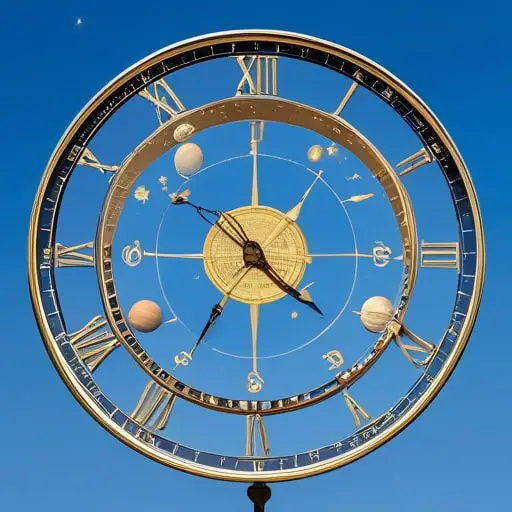Can Pluto Collide With Neptune In The Future?
In the vast expanse of our solar system, where celestial bodies dance in a delicate balance, one might wonder if the paths of Pluto and Neptune will ever intersect.
Can these distant planets, with their contrasting characteristics and enigmatic allure, collide in the future?
As you ponder this question, it is important to consider the intricacies of their orbital dynamics, the gravitational forces at play, and the various factors that shape the stability of our cosmic neighborhood.
Join us on this exploration as we delve into the possibilities and implications of a potential encounter between Pluto and Neptune, captivating in its own right.
Key Takeaways
- Orbital resonance and gravitational effects stabilize Pluto’s orbit and prevent collisions with Neptune.
- Optical illusions caused by relative positions also contribute to maintaining separation between Pluto and Neptune.
- The current understanding of orbit stability suggests a minimal probability of a catastrophic collision between Pluto and Neptune.
- A collision between Pluto and Neptune would have significant implications for the entire solar system, disrupting orbits and causing gravitational disturbances.
The Gravitational Dance of Pluto and Neptune
The gravitational dance between Pluto and Neptune is a complex interplay of orbital resonance and gravitational forces that ensures their separation in three-dimensional space. This intricate choreography prevents their orbits from intersecting and keeps them at a safe distance from each other.
The 3:2 orbital resonance between Neptune and Pluto further limits the minimum distance between their orbits, maintaining the delicate balance of their celestial paths.
Through the phenomenon of gravitational resonance, the gravitational forces exerted by both planets alter their trajectories, preventing them from coming closer than about 16 astronomical units.
This intricate dance, combined with the optical illusions caused by their relative positions, guarantees the continued separation of Pluto and Neptune.
As long as the solar system maintains its present configuration, catastrophic collisions between these two celestial bodies are highly unlikely.
Understanding the Orbital Dynamics of These Distant Planets
Understanding the orbital dynamics of these distant planets requires a meticulous analysis of their gravitational interactions and the intricate choreography that maintains their separation. The following bullet points provide a clear image of the complexities involved:
- Pluto’s orbit: Pluto follows an elliptical and inclined orbit, ensuring that it remains at a safe distance from Neptune. It never comes within about 16 astronomical units of Neptune.
- Neptune’s orbit: Neptune also follows its own elliptical path around the Sun, with its own inclination. This further contributes to the separation between the two planets.
- Combined gravitational effects: The gravitational influences of Uranus, Neptune, and Jupiter work together to keep Pluto’s orbit stable and prevent potential collisions with Neptune.
- 3:2 orbital resonance: The 3:2 orbital resonance between Pluto and Neptune, where Pluto completes two orbits for every three of Neptune’s, ensures that their paths don’t intersect in three-dimensional space.
- Unlikely collisions: Despite the apparent crossing of their orbits in diagrams, the steep inclinations of Pluto and Neptune make actual collisions highly unlikely.
These factors combined provide a comprehensive understanding of the intricate dynamics that maintain the separation between Pluto and Neptune.
Potential Scenarios for a Future Collision
Exploring the potential for a future collision between Pluto and Neptune involves a detailed analysis of their orbital dynamics and the factors that contribute to their separation.
While Pluto is classified as a dwarf planet, both it and Neptune have distinct orbits that play a crucial role in preventing collisions. The 3:2 orbital resonance between the two ensures that their paths don’t intersect in 3D space.
Furthermore, Pluto’s latitudinal and azimuthal libration keeps it safely away from the orbit of Neptune.
Although numerical simulations suggest that Pluto’s orbit is chaotic, it remains stable due to the gravitational effects exerted by other planets in the solar system.
As long as the current orbital configuration is maintained, catastrophic collisions between Pluto and Neptune are highly unlikely.
The combination of optical illusions and gravitational resonance ensures their separation, providing a sense of belonging and stability within the solar system.
Factors That Could Influence the Likelihood of a Collision
To further analyze the potential for a collision between Pluto and Neptune, it’s important to consider various factors that could influence the likelihood of such an event. These factors include:
- The 3:2 orbital resonance and steep inclination of Neptune and Pluto’s orbits, which prevent them from colliding in 2D space.
- The gravitational effects of Uranus, Neptune, and Jupiter on Pluto’s orbit stability, keeping it safe from collisions with Neptune.
- The gravitational resonance between Neptune and Pluto, ensuring their separation and preventing them from getting closer than 2600 million km to each other.
The focus of the New Horizons mission on exploring and studying Pluto, without addressing the possibility of a collision between Neptune and Pluto.
The significant difference in Pluto’s orbit, taking it much higher above the Sun’s orbital plane than Neptune, making a collision between the two planets unlikely.
Considering these factors, it appears highly unlikely for a collision to occur between Pluto and Neptune in the future.
The Role of Gravitational Interactions in Shaping Our Solar System
Gravitational interactions play a crucial role in shaping the structure and dynamics of our solar system. These interactions between celestial bodies, such as planets, moons, and asteroids, determine their orbits, stability, and overall behavior.
In the case of the potential collision between Pluto and Neptune, gravitational interactions are significant. The 3:2 orbital resonance between Pluto and Neptune limits their minimum distance and prevents them from colliding.
Furthermore, the combined gravitational effects of Uranus, Neptune, and Jupiter contribute to the stability of Pluto’s orbit, preventing collisions.
The steep inclination and gravitational resonance of Neptune and Pluto’s orbits make collisions highly unlikely.
Understanding the role of gravitational interactions in shaping our solar system provides valuable insights into the delicate balance that exists among celestial bodies.
Investigating the Long-Term Stability of Pluto and Neptune’s Orbits
The long-term stability of Pluto and Neptune’s orbits can be investigated through numerical simulations and the study of their gravitational resonance. By analyzing these factors, scientists have determined the following:
- Neptune and Pluto’s orbits don’t intersect in three-dimensional space due to their 3:2 orbital resonance and Pluto’s tilted elliptical orbit.
- Pluto’s orbit experiences libration, which keeps it safely away from Neptune during their closest approach.
Numerical simulations suggest that Pluto’s orbit is technically chaotic, but recent research indicates its stability due to the gravitational effects of Uranus, Neptune, and Jupiter.
As long as the solar system maintains its current orbital configuration, catastrophic collisions between Pluto and Neptune are highly unlikely. The steep inclination of their orbits ensures that they never come closer than around 2600 million km to each other.
Through these investigations, it’s clear that the long-term stability of Pluto and Neptune’s orbits is maintained over billions of years.
Implications and Consequences of a Hypothetical Collision Between the Two Planets
Analyzing the implications and consequences of a hypothetical collision between Pluto and Neptune, it becomes evident that the long-term stability of their orbits plays a crucial role in mitigating the chances of such an event.
The implications of a collision between these two planets would be significant, with potential consequences for the entire solar system.
A collision between Pluto and Neptune would lead to the disruption of their orbits, causing gravitational disturbances that could impact other celestial bodies.
The consequences could include changes in the orbits of nearby planets, the creation of new asteroids or moons, or even the ejection of objects from the solar system altogether.
However, it is important to note that the likelihood of such a collision is extremely low, given the current understanding of the stability of their orbits.
The chances of a catastrophic collision occurring between Pluto and Neptune in the foreseeable future are minimal.
| Implications | Consequences |
|---|---|
| Disruption of orbits | Changes in nearby planets’ orbits |
| Gravitational disturbances | Creation of new asteroids or moons |
| Impact on other celestial bodies | Ejection of objects from the solar system |
Frequently Asked Questions
What Will Happen to Pluto in 2030?
In 2030, you can expect Pluto to continue its stable orbit, unaffected by any potential collision with Neptune. The current understanding of their orbital dynamics suggests no imminent threat of collision.
Will Pluto Eventually Collide With Uranus?
Pluto and Neptune will not collide in the future. Their stable orbits and gravitational resonance ensure their separation. Don’t worry, as long as the solar system maintains its current status quo, no collision is expected.
Will Pluto Collide With Neptune at Some Point in the Future Based on Our Knowledge for Our Solar System?
Pluto will not collide with Neptune in the future. Their stable orbits, influenced by other planets, prevent them from coming close enough for a collision. The current orbital resonance makes a collision highly unlikely.
Will Pluto Become Neptune’s Moon?
Pluto will not become Neptune’s moon. The stability of their orbits and gravitational resonances prevent any catastrophic collisions. Their current configurations keep them safely apart, ensuring the long-term stability of Pluto’s orbit.
Conclusion
In the vast celestial dance of our solar system, the fates of Pluto and Neptune remain intertwined yet harmoniously distant. Their orbital resonance and gravitational interplay create a delicate balance, ensuring their paths never collide.
Like two celestial partners waltzing through space, they gracefully navigate the cosmic stage, forever avoiding a catastrophic collision. The stability of their orbits, upheld by the intricate web of planetary forces, guarantees that this mesmerizing performance will continue for eons to come.










